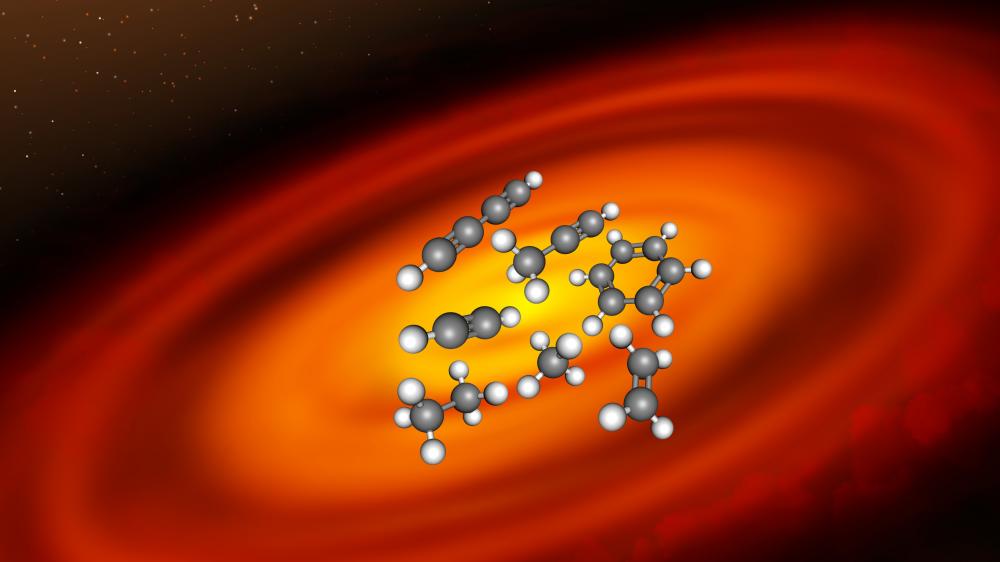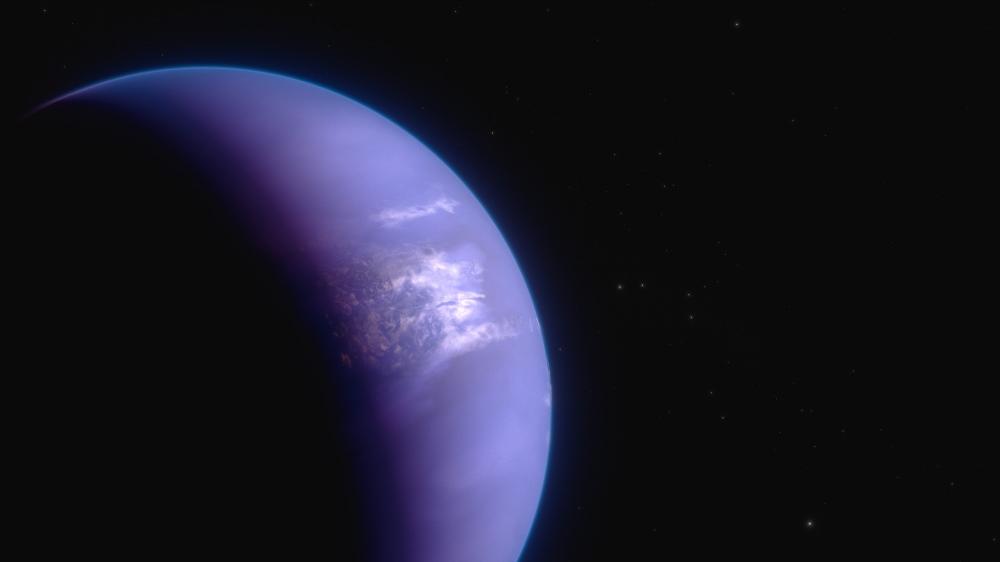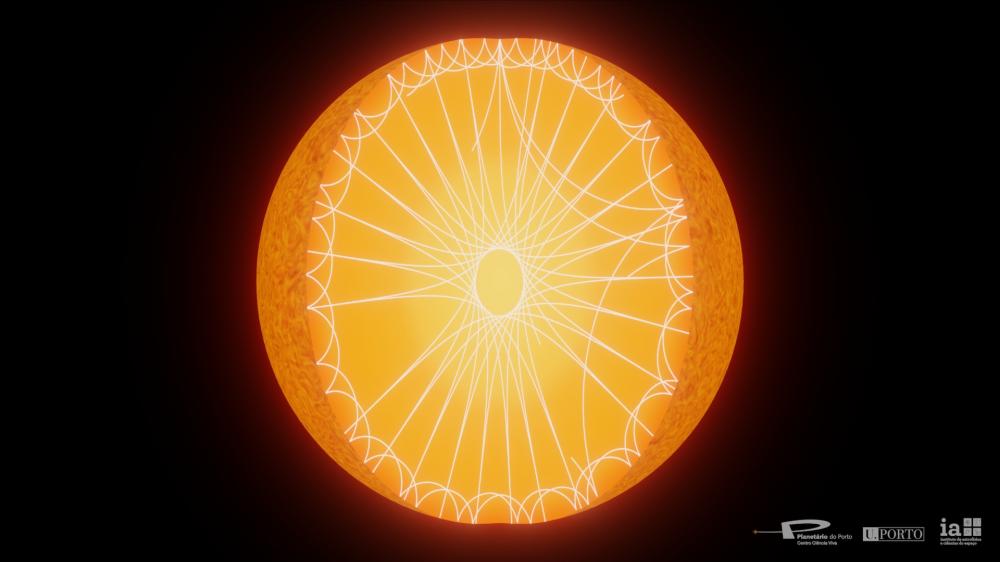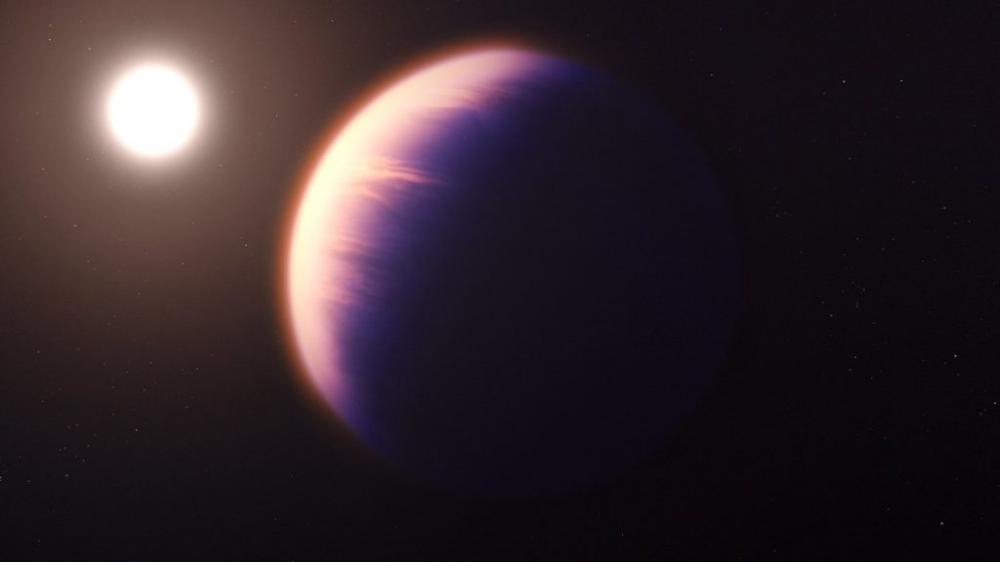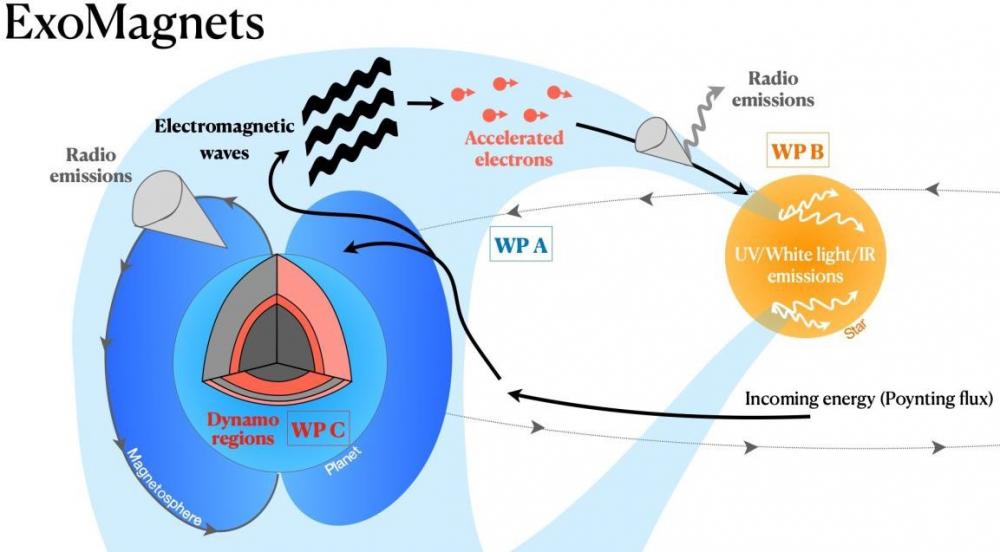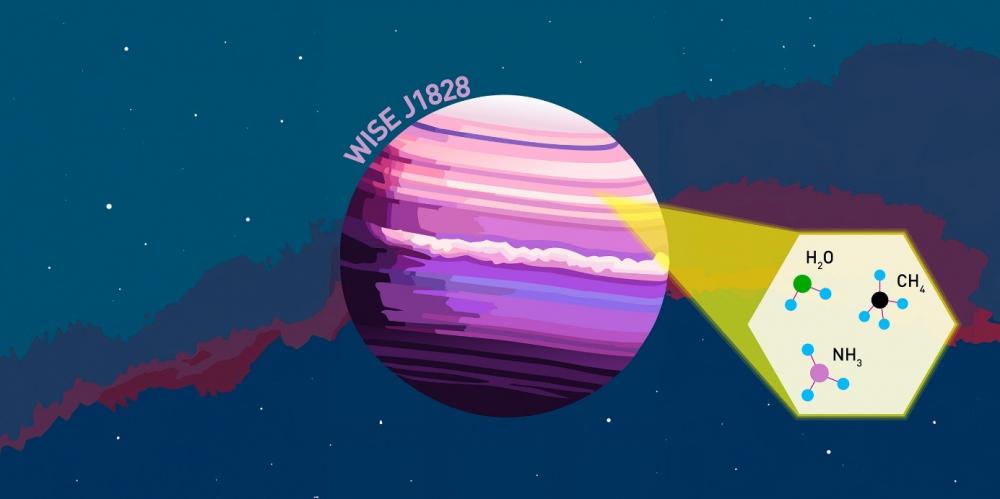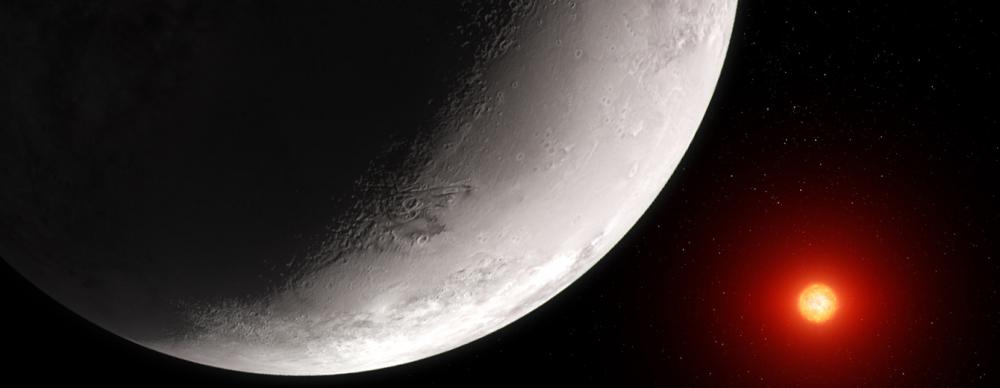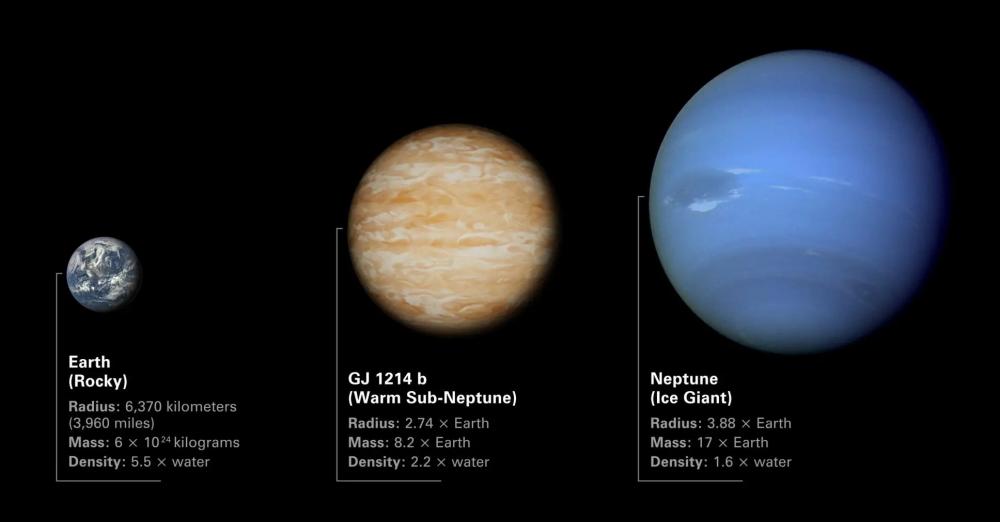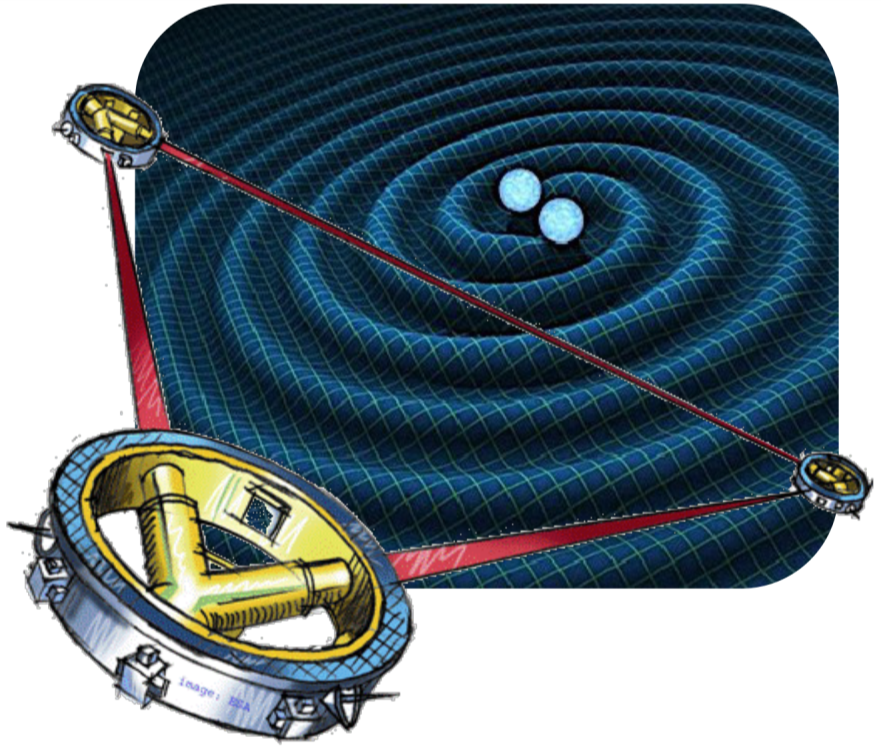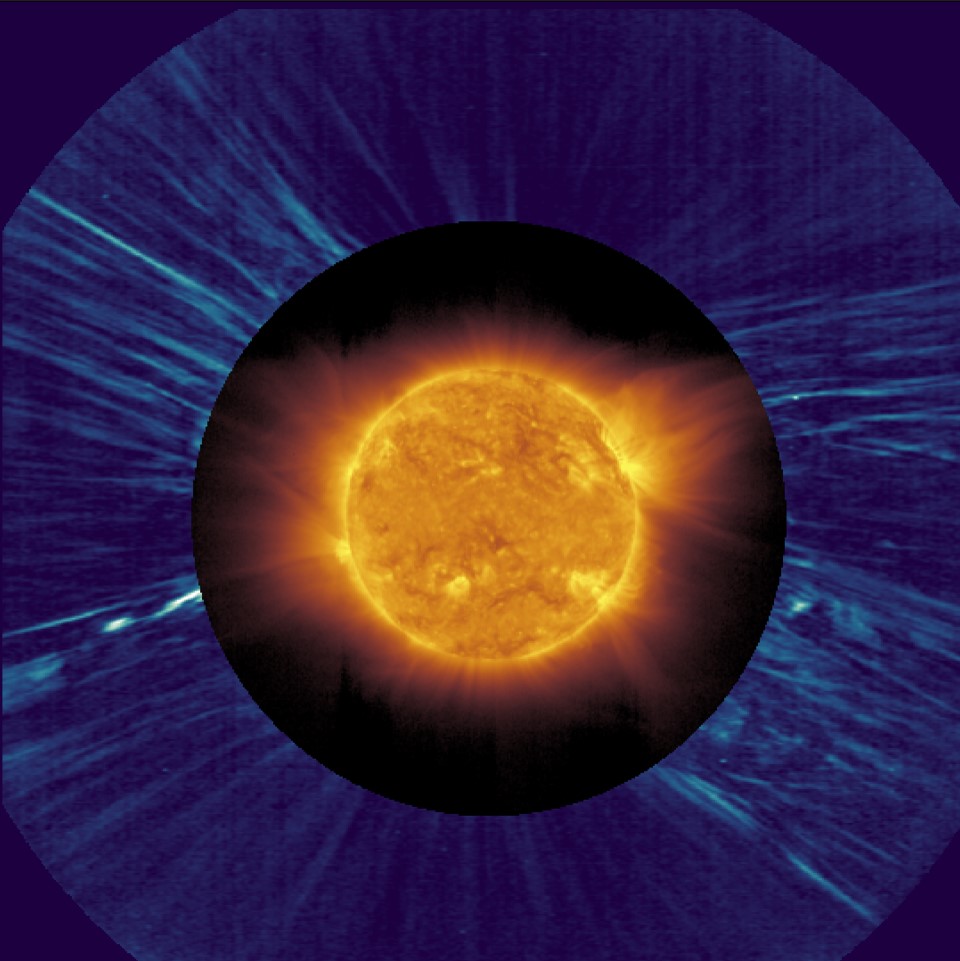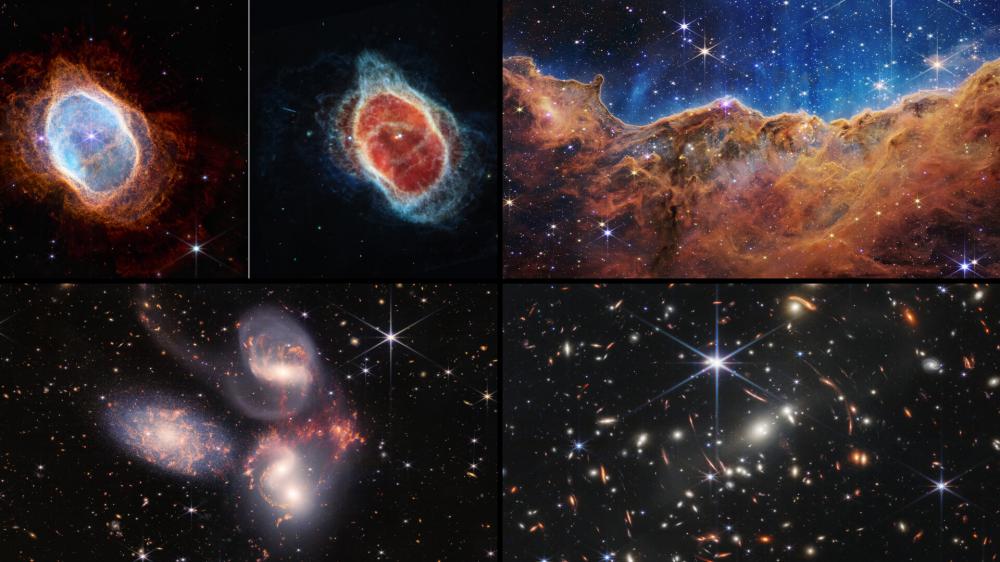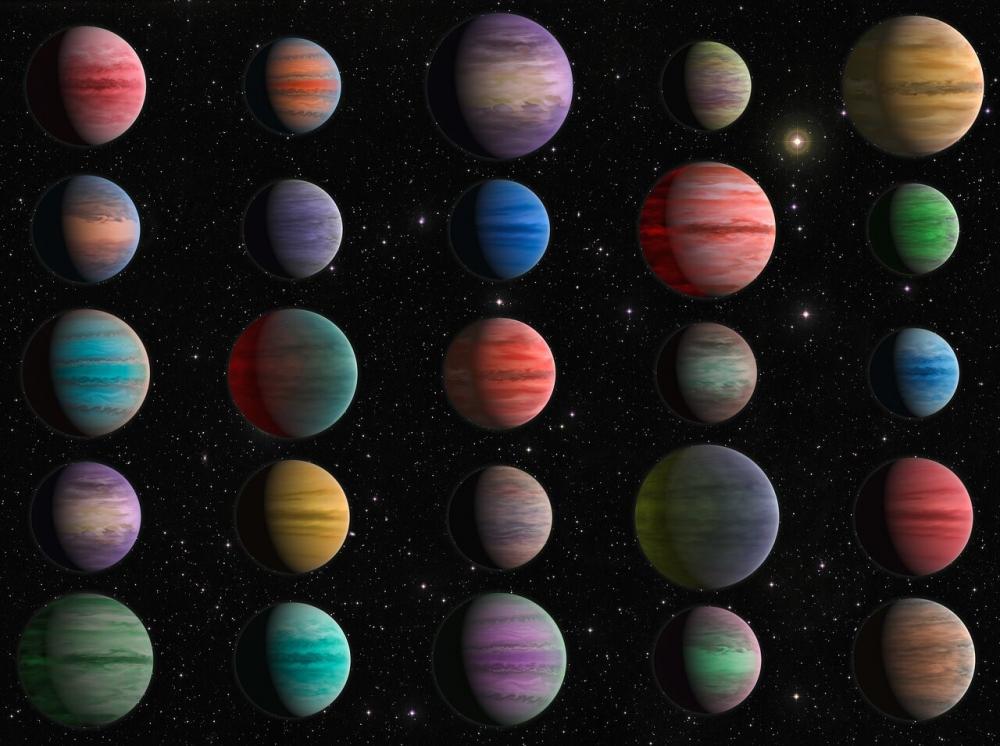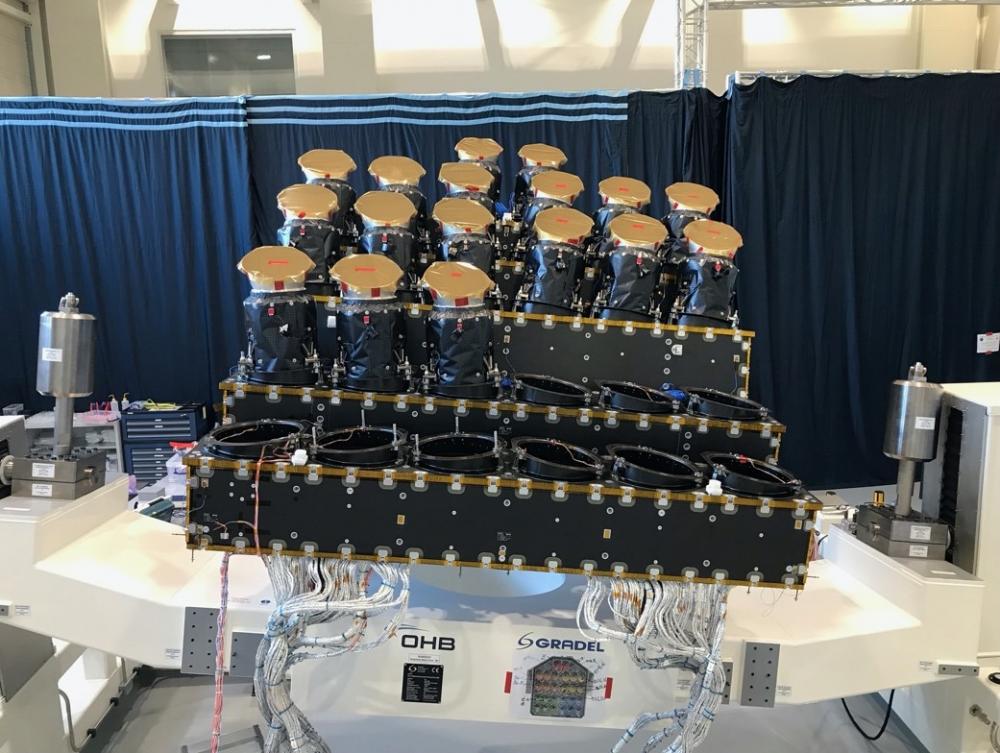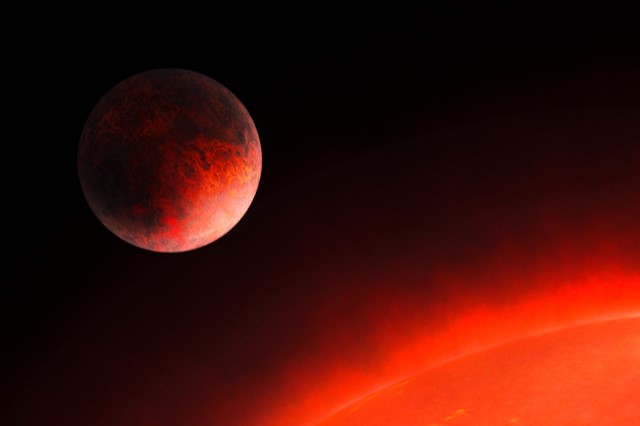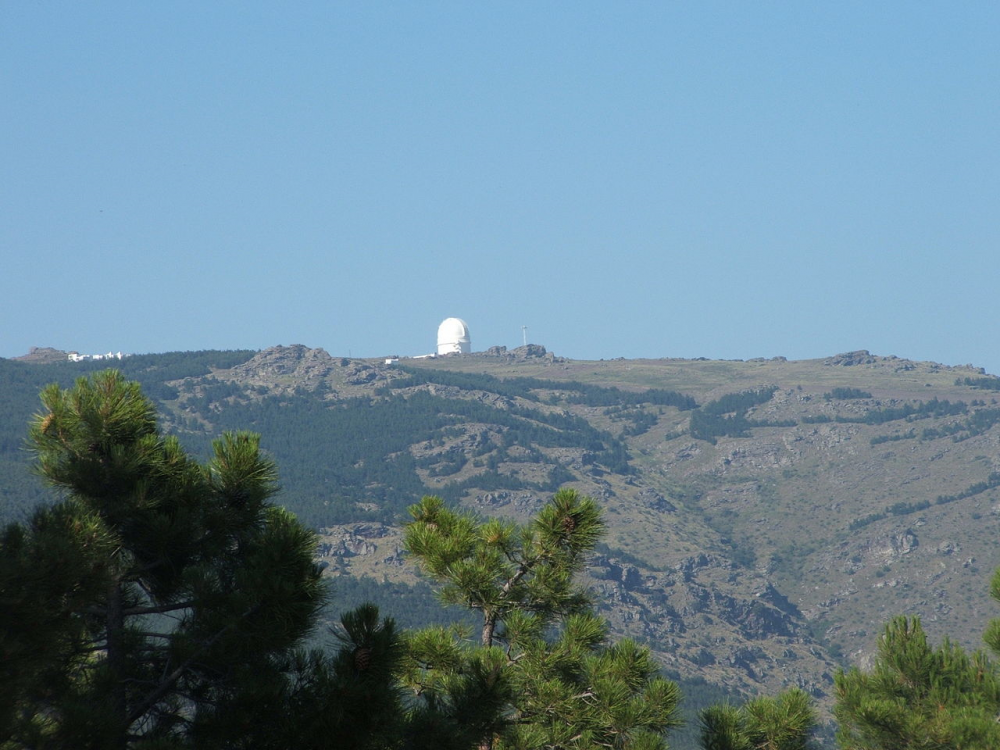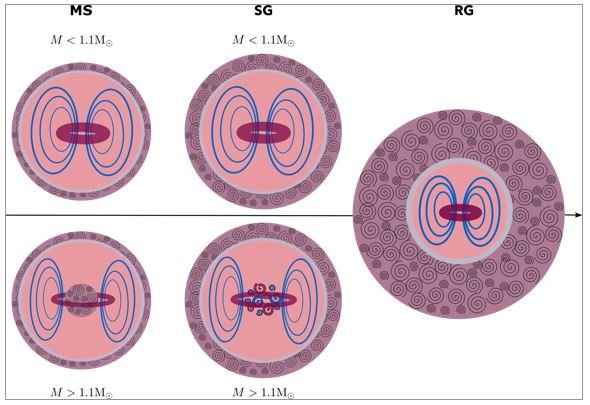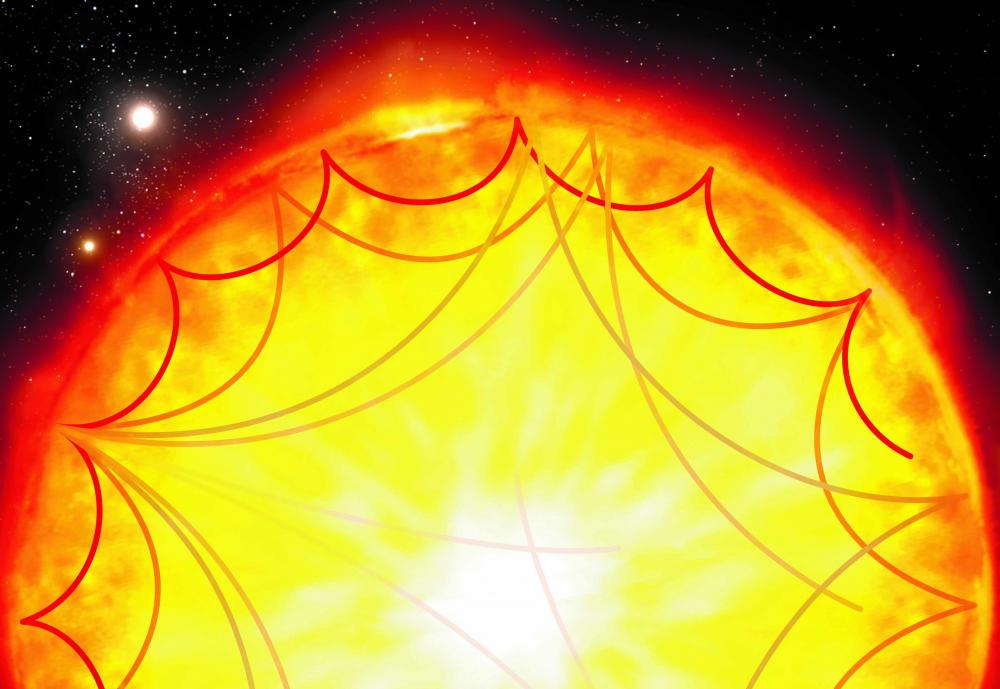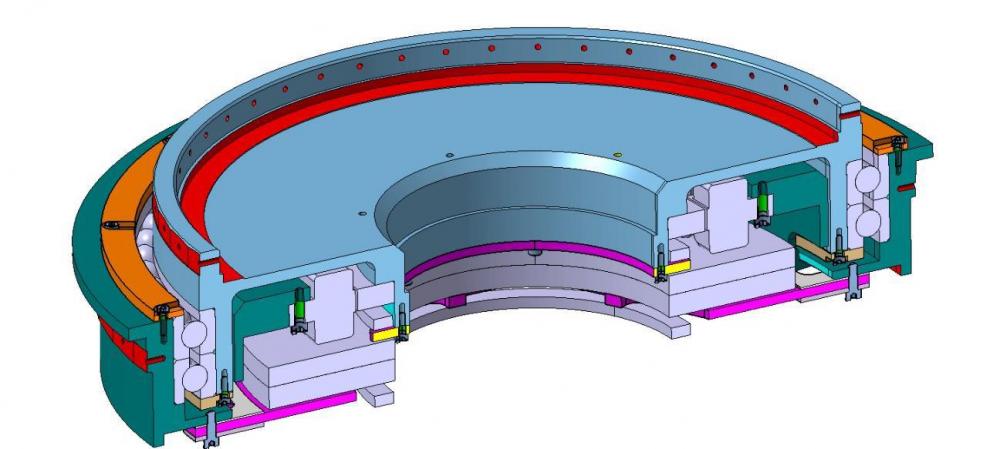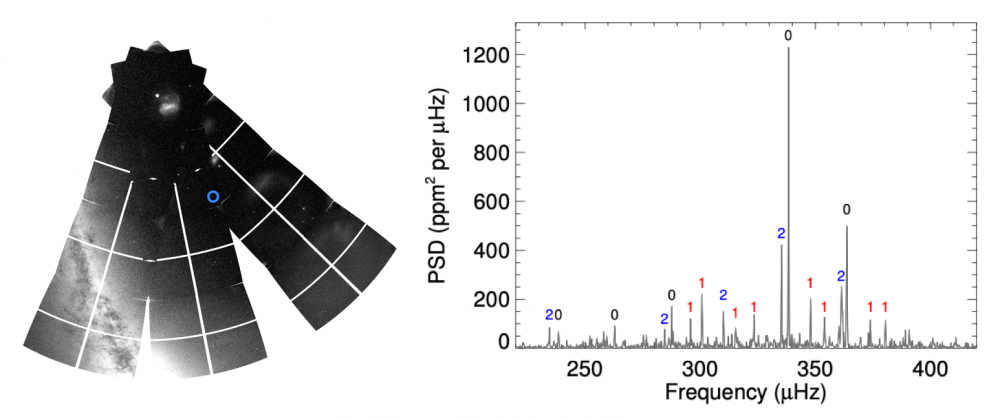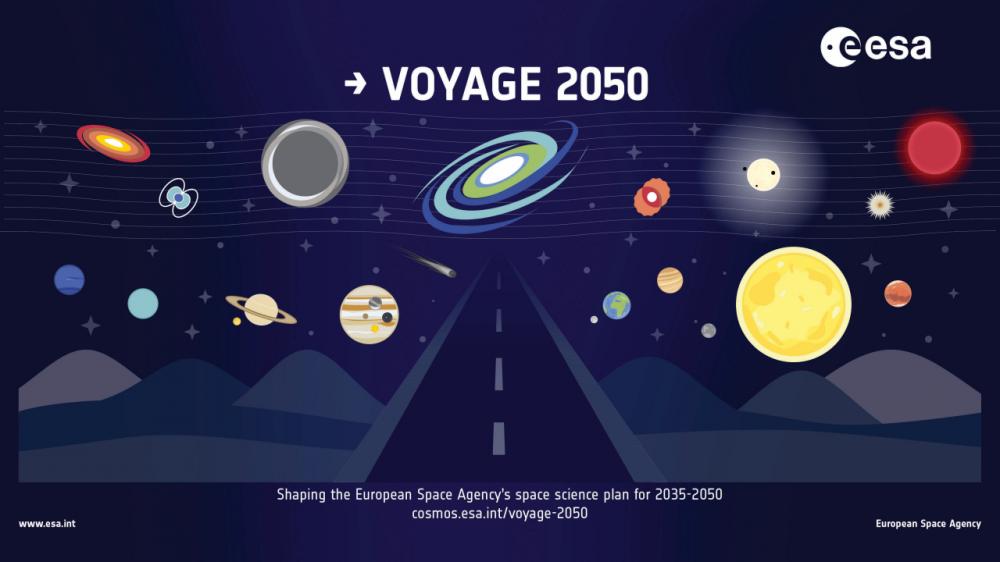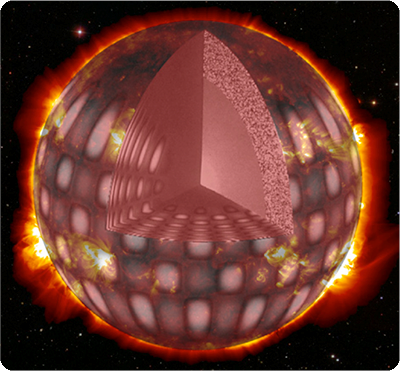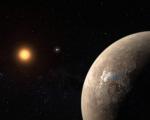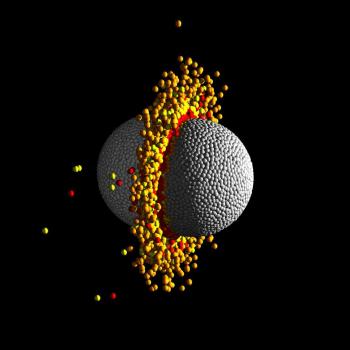Jun 14, 2024
An international research team, including scientists from CEA, has just revealed the chemical composition of a disk of matter rotating around a young star, where new planets are forming.
May 03, 2024
An international team of researchers, including members from CEA, utilized NASA's James Webb Space Telescope to map the weather of the hot gas giant WASP-43 b.
Mar 27, 2024
An international team, including the Astrophysics Department of CEA-Saclay, led by the Instituto de Astrofísica e Ciências do Espaço (IA), utilized one of the world's most advanced spectrographs to detect the smallest "stellar tremors" ever recorded in an orange dwarf star, making it the smallest and coldest star observed to date with confirmed solar oscillations.
Jan 22, 2024
The James Webb Space Telescope has produced a new portrait of the atmosphere of exoplanet WASP-39b, a "hot Saturn" some 700 light-years away.
Jan 17, 2024
To unravel this mystery, several teams with diverse skills from the Astrophysics Department had to come together, as the architecture that unites the star to its planet is highly complex.
Nov 22, 2023
ExoMagnets aims to develop new theories and high-performance simulations using future exascale computing infrastructures in order to exploit existing and future observations of the magnetism of distant exoplanets.
Antoine Strugarek, an astrophysicist in Irfu's Astrophysics Department, has been awarded an ERC Consolidator contract.
Nov 15, 2023
The consortium of laboratories that has developed the MIRI instrument for the JWST is benefiting from guaranteed observation time.
Oct 10, 2023
For the 17th edition of the Prix Jeunes Talents France, the L'Oréal Foundation rewarded 35 brilliant young female researchers in France, selected from 618 eligible applications by a jury of excellence comprising 32 researchers from the French Academy of Sciences.
Jun 20, 2023
Using the James Webb Space Telescope, a group of astronomers led by MPIA, in collaboration with a team from the Astrophysics Department of CEA Paris-Saclay, searched for an atmosphere on the rocky exoplanet TRAPPIST-1 c.
May 10, 2023
Discovered in 2009, exoplanet GJ1214b orbits a small star just 40 light-years away. With a mass around six times that of Earth and an atmosphere made up of hydrogen and helium, it is considered a "mini-Neptune".
Mar 27, 2023
An international team of researchers has used NASA's James Webb Space Telescope to measure the temperature of the rocky exoplanet TRAPPIST-1 b.
Oct 25, 2022
The four principal investigators receive almost 10 million euros for their project 4D-STAR, which will develop and deliver innovative numerical models of rotating magnetic stars in three spatial dimensions throughout their evolution.
Sep 27, 2022
The most intense magnetic fields of the universe in the context of LISA.
The LISA (Laser Interferometer Space Antenna) space mission by ESA and NASA, will observe gravitational waves from space.
Sep 15, 2022
As part of the Solar Orbiter science support activities and in conjunction with the ERC Synergy WholeSun grant, researchers from CEA Paris-Saclay, together with an international collaboration, have developed advanced numerical simulations to study the formation of structures of the solar wind.
Jul 12, 2022
The dawn of a new era in astronomy has begun as the world discovers for the first time the full capabilities of the NASA/ESA/CSA James Webb Space Telescope.
Apr 25, 2022
Archival observations of 25 hot Jupiters by the NASA/ESA Hubble Space Telescope have been analysed by an international team of astronomers, enabling them to answer five open questions important to our understanding of exoplanet atmospheres.
Mar 26, 2022
X-ray imaging of a solar flare with the Solar Orbiter STIX instrument and new simulations of the Sun
The Solar Orbiter mission, launched on February 10, 2020 from Cape Canaveral has already traveled more than 2 billion km. Since its passage just 470 km above the Earth in November 2021, the science mission has officially begun.
Jan 14, 2022
ESA's PLATO mission has been given the green light to continue its development after a successful critical review on January 11, 2022.
Dec 01, 2021
Ultralight and super fast
In the world of extrasolar planets, "GJ 367 b" is a featherweight. With half the mass of Earth, the newly discovered planet is one of the lightest of the nearly 5,000 exoplanets known today.
Oct 12, 2021
Planets that are strongly irradiated by their host stars develop extended atmospheres that can be probed during transits.
Apr 28, 2021
An international collaboration led by a team from the Astrophysics Department/AIM Laboratory of IRFU has predicted and characterised the expected signature of internal magnetic fields in stars through their seismology - called asteroseismology.
Apr 22, 2021
An international team including researchers from the Astrophysics Department (DAp) of CEA/Irfu, working in particular at the laboratory for the Dynamics of Stars, (Exo) planets and their Environment (LDE3), has been able to demonstrate that stars rotate faster than expected as they get older.
Feb 28, 2021
An European prize for ground-breaking contributions in stellar astrophysics
The 2021 MERAC Prize for the Best Early Career Researcher in Theoretical Astrophysics is awarded to Dr Antoine Strugarek (CEA Saclay, France) for ground- breaking contributions in stellar astrophysics, including dynamo theory, predictions of solar flares and pioneering work on star-exoplanet interactions.
Jun 04, 2020
On May 18th 2020, ESO formally closed the preliminary design review of the ELT/METIS thermal infrared instrument.
Jan 13, 2020
A collision of the Milky Way with a small galaxy accurately dated by the study of the star ν Indi
ν Indi is a bright star (visual magnitude mv = 5.3) visible with the naked-eye from the southern hemisphere.
Dec 21, 2019
The European Space Agency is shaping its science programme for the period 2035-2050
After the Horizon 2000 programme started in 1983, followed by its extension Horizon 2000 Plus, the European Space Agency (ESA) is committed until 2035 into the Cosmic Vision programme that includes the launches of Athena (2031) and LISA (2034).
Oct 07, 2019
Lisa Bugnet, astrophysicist at the CEA, 2019 winner of the L'Oréal-Unesco Prize for Women in Science
Lisa Bugnet is one of 35 young women researchers who won the L'Oréal-Unesco Fellowships for Women in Science in 2019.
Jul 08, 2019
The LISA experiment will be able to detect planets throughout the Galaxy
The recent detections of gravitational waves, tiny vibrations of space-time, have opened a new window in the observation of the Universe.
Jun 30, 2019
A second life for the CEA VISIR camera
The first comprehensive planetary search campaign around the nearest star Alpha Centauri A has just been performed on the VLT telescope of the Southern European Observatory (ESO) using the NEAR infrared instrument (Near Earths in the AlphaCen Region).
Jan 27, 2019
An international collaboration, involving the Astrophysics Department-Laboratory AIM of CEA irfu, participated in the study of an exoplanetary system, Kepler-107 and revealed an amazing distribution of its 4 planets of which two seem potentially resulting from a giant impact.
